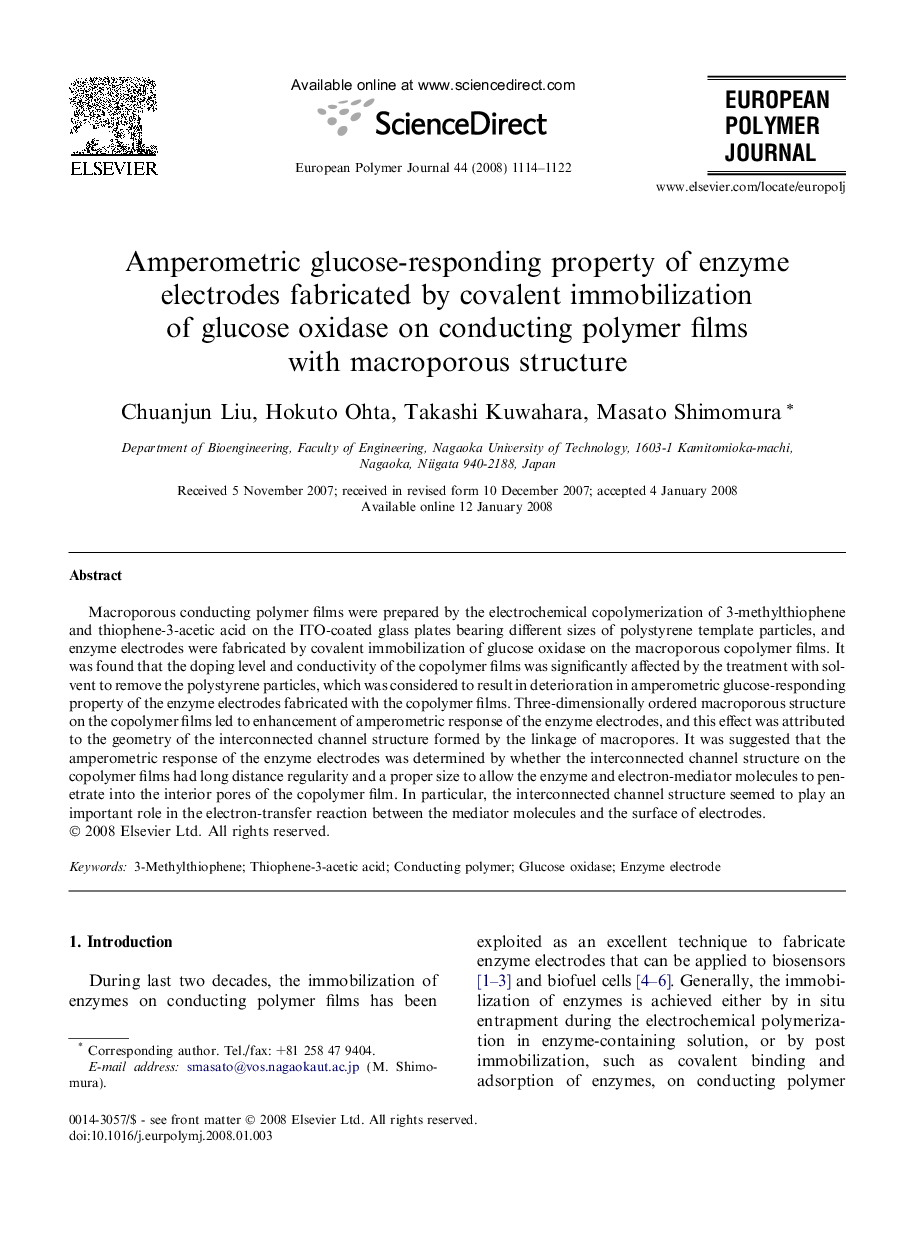| Article ID | Journal | Published Year | Pages | File Type |
|---|---|---|---|---|
| 1396561 | European Polymer Journal | 2008 | 9 Pages |
Macroporous conducting polymer films were prepared by the electrochemical copolymerization of 3-methylthiophene and thiophene-3-acetic acid on the ITO-coated glass plates bearing different sizes of polystyrene template particles, and enzyme electrodes were fabricated by covalent immobilization of glucose oxidase on the macroporous copolymer films. It was found that the doping level and conductivity of the copolymer films was significantly affected by the treatment with solvent to remove the polystyrene particles, which was considered to result in deterioration in amperometric glucose-responding property of the enzyme electrodes fabricated with the copolymer films. Three-dimensionally ordered macroporous structure on the copolymer films led to enhancement of amperometric response of the enzyme electrodes, and this effect was attributed to the geometry of the interconnected channel structure formed by the linkage of macropores. It was suggested that the amperometric response of the enzyme electrodes was determined by whether the interconnected channel structure on the copolymer films had long distance regularity and a proper size to allow the enzyme and electron-mediator molecules to penetrate into the interior pores of the copolymer film. In particular, the interconnected channel structure seemed to play an important role in the electron-transfer reaction between the mediator molecules and the surface of electrodes.
